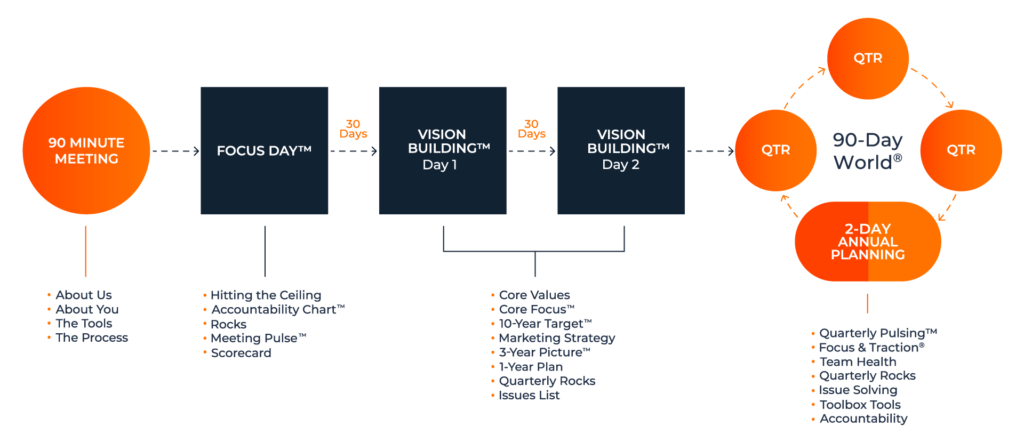
It’s never a good sign when the owner of a business is the only one closing sales. This is the exact position one of my clients found herself in. She was a sales expert, founded the company, and could sell her products better than anyone on earth.
Her sales staff, however, seemed like they couldn’t sell water to a rich man dying of thirst.
Fortunately, they were open to implementing a proven process in the business and because it was done right, they were able to get everyone selling like the stellar CEO.
What is a Proven Process?
A proven process is the proven way you provide your service or product to your customers. You do it every time and it produces the same result.
In kindergarten, we were taught “show and tell”. In EOS®, we believe that you shouldn’t tell someone something you can show. That’s because business is about visualization. We can explain something over and over, but it’s not until someone actually sees the bigger picture that it becomes real.
EOS Implementers® do this when describing a client’s journey. We go through the 90 Minute Meeting explaining everything about us, what we do, and how we do it.
But is that enough? It isn’t, which is why we also show it.

A proven process is an illustration — a visual aid on a single sheet of paper — which exemplifies the entire journey a client experiences when working with you.
While hearing the process being described, clients can actually see themselves undergoing the amazing transformation they’ll have when working with us.
Two Common Mistakes When Defining Your Proven Process:
1. Thinking that it’s just not that big of a deal
The most common and harmful mistake is that it’s not important. It’s just one piece of collateral, right?
Many companies running on EOS and even some EOS Implementers neglect the proven process when discussing marketing strategy. They put it on their To-Do List and keep it there for months before deciding it’s not worth the time.
But it’s extremely powerful and shouldn’t be overlooked. For those who’ve used it, it almost immediately improved their business.
2. From the wrong perspective
EOS teaches two major processes: the proven process and core processes. The two are both important and very different.
Core processes deal with internal operations. These will involve things like an HR process, operations processes, your accounting process, etc. Too many people confuse this with the proven process which is part of the marketing strategy and is external/client-facing.
A proven process should not have anything to do with internal operations. It should only reflect the client’s experience when working with your company.
For the business owner who only views the company from the inside, this can be difficult. It may be the first time they have stepped outside of themselves to work on the business and see the business from the client’s perspective.
Proven Process Success: A Turnaround Story
After disappointedly watching her sales team constantly turnover, my client knew there had to be a better way. So she implemented the proven process and saw the sales team’s performance change almost overnight.
Although it isn’t a sales script, it does give a basic guideline of the stages to discuss during a presentation. Each sales professional hits the critical points, but is still able to deliver their unique style.
By outlining a pre-planned journey, the salesperson has less room to mess up. Better yet, they were able to paint the same clear picture in their customer’s mind as the CEO had over and over again. For them, the drastic sales turnaround made the proven process a pretty big deal.
Refuse to neglect this key sales transformer and get working on your proven process now!
Next Steps:
- Download a free chapter of Get a Grip to learn practical ways to use EOS in your company.
- Request a free 90 Minute Meeting with an EOS Implementer® to get a clear picture of what it looks like to run your company on EOS.
- Learn to make decisions faster and better by downloading a copy of our free eBook, Decide!.






